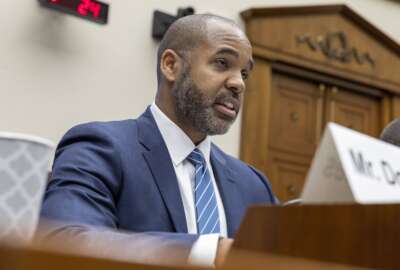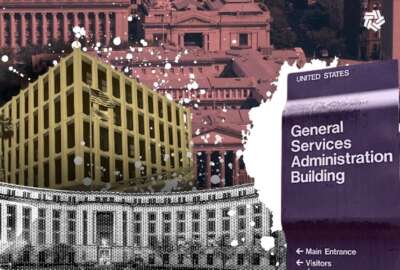Column: The green office castle
Chris O\'Brien is the director of sustainability at American University in Washington. He offers some advice for federal workers who want to green their offices.
For many federal workers the office is the castle where they reign supreme. Some agencies want to have the greenest castle in the land – a mote filled with recycled graywater supporting native grasses and endangered species of frog. Other agencies view green office programs as barbarian attacks, sometimes in the shape of a Trojan horse sneak attack threatening the sanctuary of the kingdom.
There are valuable lessons embedded in both of these perspectives. On the one hand, green office efforts can save money, cut waste, reduce utilities and add an attractive green sheen to an organizational reputation – especially for the king of the castle.
But greening also requires change and usually that means disrupting the comfortable and familiar ways of the court. Plus, it’s usually the serfs who shoulder the extra work, which can sow the seeds of rebellion.
But there are ways to chart a course to peace within the realm. The trick is for the green tribe to emphasize the traditional triumvirate of cost, quality and supply – rather than focusing exclusively on environmental impacts. In other words, go easy dishing out the guilt and instead serve up solutions that make work easier and more efficient and heap the praise on everyone who helps.
Humble Beginnings
Green office programs can spring from the chief executive, a volunteer, or a professional sustainability staff person. Ultimately, executive buy-in is critical to long term success but many powerful green programs started with lowly volunteer efforts that began in one small office.
Consistent efforts over time can lead to formal mandates even when the chief executive is initially unfriendly to the idea. Establish some early successes and steer clear of avoidable failures. Small successes can convert naysayers but nothing sinks the ship faster than one embarrassing failure, especially one that could have been avoided with better planning.
I serve as the director of sustainability at American University in Washington. Sustainability started here many years ago with voluntary efforts led mainly by students. Eventually an intern position was created. Successful energy-saving and waste reducing efforts combined with student efforts that kept the spotlight on sustainability. Green student, faculty and staff champions slowly emerged, found common ground and identified projects with mutual benefit.
Over time, the intern position was upgraded to coordinator and then manager and ultimately a separate office of sustainability with a director level position.
Who’s the Greenest of Them All?
Corporations such as Office Depot are offering green office audits to their customers who are striving to green their office supplies. Government agencies and universities are conducting similar audits but for internal customers. For example, the Green the Capitol program catalyzes sustainable office practices in the House of Representatives with a customized “My Green Office” online dashboard.
American University has a student-run eco-certification program for offices who implement a checklist of green office practices and products.
According to the 2009 edition of the Responsible Purchasing Trends Report, 67 percent of surveyed institutions, including many government entities, have a formal or informal green purchasing policy. The policies typically prioritize energy conservation, recycling and recyclability, human health and toxics, air pollution, water pollution and conservation, biodegradable products, and sustainable forestry.
Our Green Eagle office program has actions and resources for:
- Cleaning/Janitorial,
- Computers,
- Copiers,
- Electricity,
- Food and dining,
- Furniture,
- Lighting,
- Office supplies,
- Paper,
- Printers,
- Printing and mailing,
- Toner cartridges,
- Travel,
- Waste.
Many of our action steps rely on third party standards and certifications that make it easier to go green, such as Energy Star, LEED, Green Seal, EPEAT, FSC, Organic and Fair Trade.
Our Green Eagle tracking tool lets users assign tasks and establish deadlines and measure progress in dollars and cents as well as in environmental benefits.
Long Live the Green!
As green office programs grow and have increasing benefit to the organization, telling the story is a vital way of maintaining support and building an institutional culture of sustainability. This year we rolled out of Green Eagle program, designating sustainability champions throughout campus by tapping into our college pride with a green twist on our university mascot. As sustainability successes are achieved, we announced them with fanfare.
Everyone likes a positive story and this can be one of the best tools for widening the circle of support. Competitions also are proving to be strong, yet fun drivers for engaging participation throughout the organization. This year we will publish our first sustainability report to acknowledge our progress and lay out our vision for growing a green empire.
Long live the green!
Chris O’Brien is the director of sustainability at American University.
Copyright © 2025 Federal News Network. All rights reserved. This website is not intended for users located within the European Economic Area.





